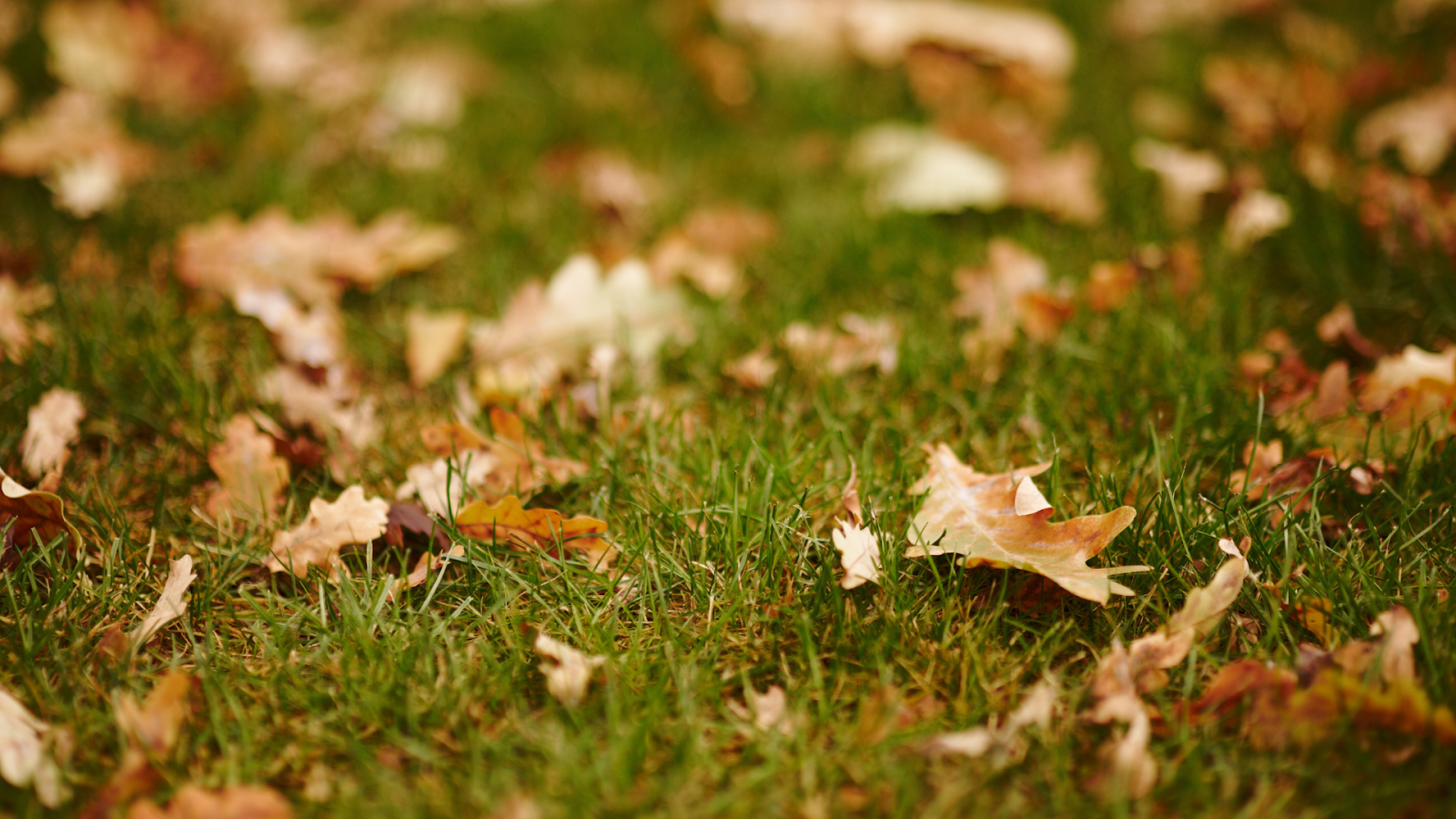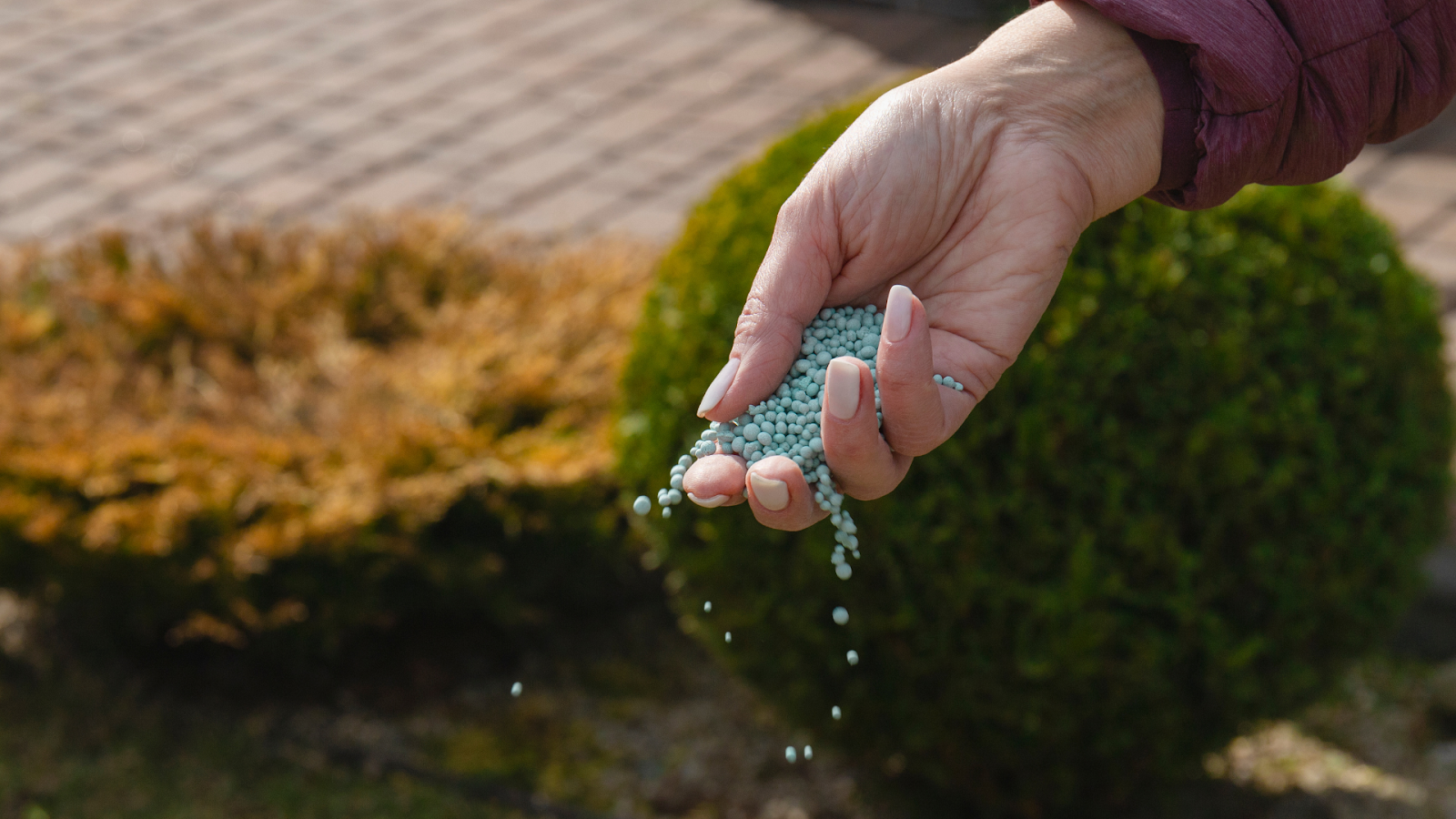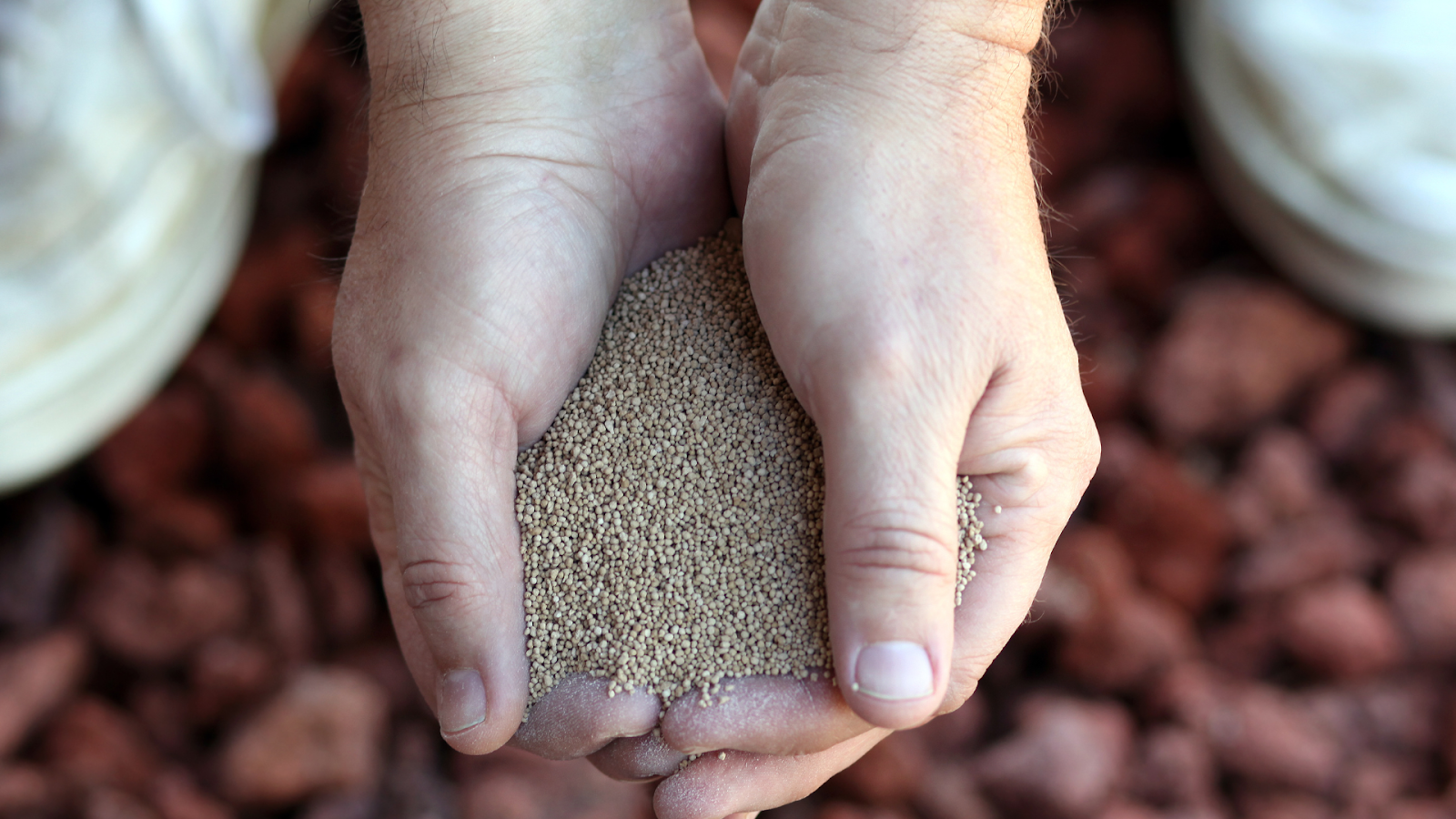In many regions, especially where soil tends to be naturally acidic, lime is just as important to lawn health as mowing or watering. Without the right soil pH, your grass cannot absorb key nutrients, even if you're applying fertilizer regularly.
Most grasses grow best when the soil pH is between 6.0 and 7.0. But when acidity rises, essential nutrients like nitrogen, potassium, and phosphorus become unavailable. This can lead to yellowing, patchy, or thinning grass.
Lime helps correct soil acidity. By restoring pH balance, it improves nutrient availability and supports healthier, greener grass over time.
In this blog, you’ll learn why lime might be precisely what your lawn needs, how to tell when it’s time to apply it, and the right way to get it done.
Lime is a soil additive made from natural limestone, rich in calcium carbonate or magnesium carbonate. It is used to adjust soil pH levels that have become too acidic, creating a healthier environment for your grass to grow.
When your soil is too acidic, it can quietly block the nutrients your lawn needs, including those that may already be present in the soil but are unavailable to the roots.
Here’s how lime helps restore balance and support healthy lawn growth:
Lime doesn't act as a fertilizer. Instead, it works behind the scenes, quietly correcting your soil’s pH so the nutrients already there can do their job.

Some signs to watch for include:
While these symptoms can offer strong clues, the most accurate way to assess your lawn's needs is with a soil pH test. If the pH level is below 6.0, your lawn will likely benefit from lime application.
Here’s a quick guide to what different grasses prefer:
Over time, factors such as rainfall, fertilizers, and organic activity can lower the pH of your soil. Even lawns that appear healthy on the surface may require occasional adjustments to maintain strong growth.
Once you have determined your lawn's pH, the next step is to pick the correct type of lawn.
Using the right type for your lawn’s needs can make a big difference. Your soil test results will help guide your decision, but it’s helpful to understand what each option offers before you apply.
Here are the most common types of lime used in lawn care:
Note: One type of lime you should avoid for routine lawn care is hydrated lime. While it can raise pH very quickly, it is highly reactive and may damage your grass if misapplied.
Choosing the correct form of lime ensures that your efforts are both safe and effective.
After procuring it, the next step is to time your lime application correctly and ensure that you use the right amount, neither too much nor too little.

Timing plays a key role in how effectively lime adjusts your soil’s pH. For best results, aim to apply lime during the seasons when your lawn can absorb and process it slowly and evenly.
Here are the best times to apply lime:
However, avoid applying lime when:
The exact amount of lime your lawn needs depends on the current pH and texture of your soil, which is why a soil test is so important.
Follow these general guidelines:
Applying the right amount at the right time helps lime work gradually and safely, building a strong foundation for your lawn to grow.

Proper timing, preparation, and technique help the lime adjust your soil pH effectively without risking overcorrection.
Here’s a step-by-step approach to ensure your lawn receives the full benefit.
Before anything else, send a soil sample to your local extension service. This will provide you with accurate pH readings and a recommendation on how much lime your specific lawn requires.
Good preparation helps the lime work into the soil instead of sitting on the surface.
Use your soil test results and the size of your lawn to determine your total lime requirement.
For example, if your lawn is 3,000 square feet, the test recommends 30 pounds per 1,000 square feet. 3,000 ÷ 1,000 × 30 = 90 pounds of lime
Avoid applying more than 50 pounds per 1,000 square feet in one application. If more is needed, split it between spring and fall.
Use either a drop spreader or a broadcast spreader for even coverage.
Once you’ve spread the lime, give your lawn a light watering. This helps the lime settle into the soil and reduces the risk of it sitting on grass blades.
Avoid applying lime without confirming a need, as over-liming can harm your grass.
When applied with care, lime can quietly work wonders beneath the surface. However, like many aspects of lawn care, how you use it matters just as much as when you use it.

These are some of the most common mistakes homeowners make when applying lime, along with essential guidance on how lime interacts with fertilizer, seed, and ongoing care.
Without a soil test, there’s no way to know if your lawn needs lime or how much to apply. Guessing can lead to overcorrection or no results at all.
Overliming can push your soil’s pH too high. This can block essential nutrients, such as iron and manganese, leading to yellowing or stunted grass.
Avoid spreading lime on lawns that are frozen, waterlogged, parched, or under stress from drought or disease. These conditions prevent the soil from absorbing the lime properly.
Fine particles or even pellets can drift in windy conditions, leading to uneven distribution and wasted product.
Lime needs moisture to activate and begin working into the soil. Light watering helps it settle in and prevents it from sitting on the grass blades.
Both lime and fertilizer are critical, but they’re best used in separate applications. Apply lime first, then wait about two to four weeks before applying fertilizer.
Lime acts slowly and steadily. You may notice early signs of improvement within a few weeks, but most lawns typically take two to six months to adjust fully. Retest your soil before applying again.
Most lawns only need lime every two to three years. In acidic or high-rainfall regions, testing once a year may be helpful. For others, every two to four years is enough. Applying lime too often can damage your lawn just as much as skipping it altogether.
Taking time to get this step right pays off in a stronger, healthier lawn. Once the lime is down and your soil is on the path to balance, the next step is simply to give it time, and stay tuned in to what your lawn is telling you.
Lime is a simple but effective way to improve your lawn’s health, boost nutrient availability, and enhance overall grass growth. By adjusting your soil pH, lime creates the perfect environment for your grass to grow strong and resilient. Whether you apply it in the fall or spring, the benefits of lime are clear: healthier roots, lush greenery, and a lawn that’s better equipped to handle drought, pests, and disease.
At Percy’s Lawn Care, we’re here to help you make the right choices for your lawn’s health. Whether it’s applying lime, assessing soil health, or managing your lawn care needs, we’ve got the experience and expertise to guide you.
Contact us today to schedule a consultation, and let us help you create a lawn that’s healthy and green all year long. Your dream lawn is just a call away!
1. What is the difference between lime and fertilizer?
Lime and fertilizer serve different purposes. Lime adjusts your soil's pH, helping it become more neutral. It does not directly feed your lawn. Fertilizer, on the other hand, delivers essential nutrients such as nitrogen, phosphorus, and potassium. Lime creates the right environment for those nutrients to be absorbed. Used together at the right time, they support a healthier, more responsive lawn.
2. Can I apply lime and grass seed together? Yes, you can. Applying lime while overseeding or planting new grass can help create the ideal soil conditions for germination and root development. Just make sure to prep your lawn first. Remove debris, dethatch your lawn if needed, and aerate the soil to help the lime reach where it’s needed.
3. How do I choose between pelletized and powdered lime?
Both types are effective, but they differ in their handling and performance. Pelletized lime is easier to spread and produces less dust, making it a better fit for most homeowners. Powdered lime can act more quickly in the soil, but tends to be messy and harder to apply evenly. Select the option that best suits your comfort level and equipment.
4. Can too much lime hurt my lawn?
Yes. Applying too much lime can make your soil too alkaline, which limits your lawn’s access to essential nutrients, such as iron and manganese. This can cause yellowing or poor growth. Always follow soil test recommendations, and never apply more than 50 pounds per 1,000 square feet in a single treatment.
5. How can I determine if my lawn needs lime without a soil test?
There are visible signs that suggest your soil may be too acidic, such as moss growth, persistent weeds, or fertilizer that doesn’t seem to have an effect. However, these are only clues. A soil test remains the most accurate way to know your lawn’s pH and whether lime is genuinely needed.